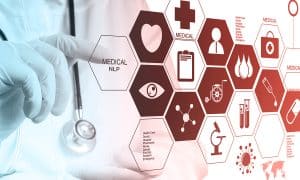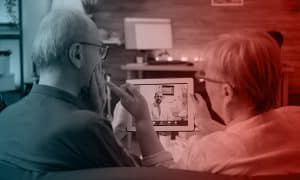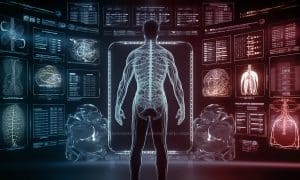Have you heard of the Sisyphus rock?
It’s an interesting legend about Sissyphus, who cheated death. However, he was punished with the task of moving a boulder up the hill. It’s an interesting myth as whenever Sisyphus felt he had pushed the rock to the peak of the hill, the hill just kept getting bigger and bigger.
Healthcare administration is similar to the rock of Sisyphus. It’s overwhelming, redundant, and perpetual. The volume of clinical documentation hospitals and healthcare centers process is massive. To simply give you a brief idea of what professionals and stakeholders record, process, and retrieve daily, here’s a non-exhaustive list:
- Summaries on patient admission and discharge
- Patient progress notes
- Notes from nurses, surgeons, physicians, and consultations
- Diverse reports from laboratory and imaging
- Medication administration records
- Notes on physical and occupational therapy
- Insurance forms, claims, and proofs
- Consent forms
- Case management notes and more
Most of the data mentioned here (and not mentioned) is present as unstructured data. Meaning, they are in different formats, types, and locations. For healthcare organizations eyeing optimizing patient care with emerging technologies such as AI and data science, data must be available in a standardized way that is machine-ready.
However, most of the process of retrieving such data is still manual, resulting in time-consuming monotonous workflows. This prevents them from attending to critical tasks that can foster better patient care while simultaneously increasing the chances of errors and incomplete information as well.
But this is gradually changing as we have NLP models to the rescue. In this article, we will break down how NLP systems can extract summaries from such clinical documents and pave the way for better processing and analysis.
Leveraging NLP To Extract Clinical Information From Documents
The power of NLP lies in the fact that it can autonomously generate clinical summaries by analyzing and processing unstructured clinical text within Electronic Health Records (EHRs). These systems can complement healthcare professionals’ jobs by extracting relevant information and organizing it into a concise and structured format, creating a comprehensive and easily digestible summary of patient encounters.
Core Advantages

Improved Efficiency
By automating the clinical summary generation process, we can free up healthcare professionals’ time, allowing them to focus on direct patient care and other critical tasks.
Optimized Accuracy
NLP systems can also result in reduced errors and inconsistencies when compared to manual documentation processes. They can also identify and flag potential issues for review by healthcare professionals.
Seamless Communication
Clear and concise summaries enable better communication among healthcare providers and stakeholders across the spectrum, ensuring all relevant information is readily available.
Streamlined workflow
The use of NLPs can be integrated into existing EHR systems, streamlining workflows and improving data accessibility and interoperability.
How Does Clinical Summary Extraction With NLP Work: A Sample Workflow
The role of technology is to simplify our lives. In this context, the use of NLP does an incredible job of eliminating redundant tasks from healthcare professionals’ everyday checklists. To give you a better idea of the workflow, here’s a quick list.
A healthcare stakeholder completes a patient encounter and uploads relevant information in the EHR.
The NLP system, which is integrated into the EHR, automatically analyzes the physician’s notes and other clinical data.
The system extracts key information as specified by NLP models and organizes it into a structured format.
A draft of the clinical summary is generated, highlighting critical details like diagnoses, medications, allergies, and procedures of a patient.
The physician reviews the draft summary and can make edits or additions if necessary.
The final clinical summary is then automatically integrated into the patient’s EHR and readily accessible to authorized healthcare providers.
How The Future Of Healthcare Management Looks Like With NLP and AI
While NLP is still in its nascent stages, breakthrough research and innovation are happening at this very moment. The pace it which NLP is evolving shows phenomenal promise in pushing the boundaries of what’s possible in healthcare.
Future developments may include:
Personalization
Summaries tailored to individual patient needs and preferences.
Real-time updates
Summaries are updated automatically as new information becomes available.
Integration with other healthcare systems
Seamless integration with clinical decision support systems & other healthcare applications.
This promising future still has certain minor bottlenecks that need acknowledgment and addressing from the healthcare fraternity. One of the basic challenges lies in the lack of structured data in this space followed by the availability of a skilled workforce with domain-specific knowledge to work on contextual clinical summaries. With healthcare data safety protocols such as GDPR and HIPAA also in place, workflows relying on NLP need consistent checks to ensure compliance with mandates.
Once these are taken care of, there is no looking back for healthcare organizations and the professionals working with them. We hope this article helped you understand the 101 of using NLP to extract clinical summaries.
If you intend to implement game-changing NLP models for your enterprise and are looking for quality healthcare data that is ethically sourced, get in touch with us today for a comprehensive discussion.




